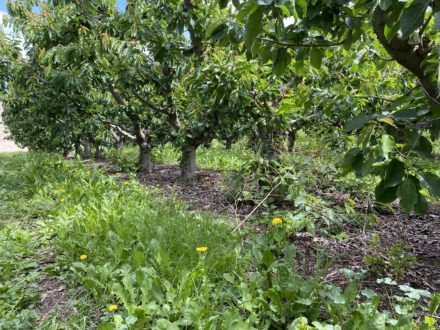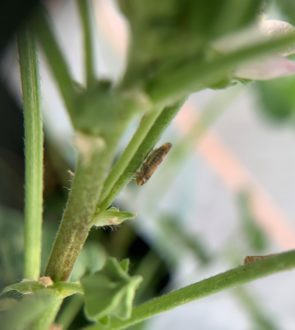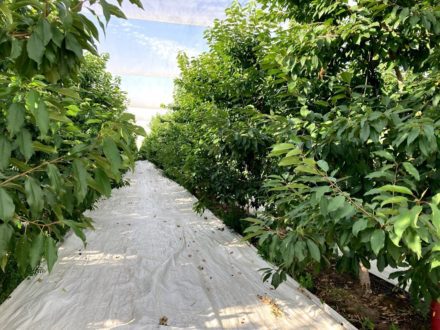

Dec 12, 2022Cherry Threat: Scientists work to fight little cherry disease
Researchers are working to combat little cherry disease (LCD), which has become more prevalent in Washington and Oregon since 2010.
At the Nov. 8 Northwest Cherry and Stone Fruit Research Review in Yakima, Washington, scientists reported on their efforts to detect and control the disease.


Little cherry virus 1, Little cherry virus 2 and X-disease phytoplasma cause diseases known as LCD or X-disease, which destroyed Canada’s cherry industry. Diseased trees produce small, off-color and flavorless cherries, making the fruit unmarketable.
In 2022, the Washington Tree Fruit Research Commission (WTFRC), the Oregon Sweet Cherry Commission (OCC) and the Northwest Nursery Improvement Institute funded more than $1 million in new and continued cherry research, which includes studying leafhoppers, which transmit X-disease.
Leafhoppers acquire the pathogen while feeding on infected plants, then transmit the infection to non-infected trees during their later feedings. Leafhopper cells lack walls and the insects are immune to most antibiotics, said Alexandra Johnson, a Washington State University doctoral student conducting culturing work in a project by Cameron Peace, a WSU Department of Horticulture scientist and professor.
Infections aren’t usually discovered until symptoms, which are numerous and can appear non-uniformly throughout the canopy, present themselves, Johnson said. While insects are the pathogen’s primary transport mode, underground root grafting can also spread infection. Once trees are infected, the pathogen is multiplied systemically throughout the fall. The only solution is to remove the infected tree and any susceptible neighboring trees.
Research muscle
Since 2019, a WSU and Oregon State University research task force has developed tree removal management practices, created basic phenology or seasonal timing of plant events on organisms that transmit pathogens, and identified ground cover as a key source of transmission, said Tobin Northfield, a WSU Department of Entomology, Tree Fruit Research and Extension Center entomologist in Wenatchee, Washington.
Researchers work closely, sometimes reporting findings to the field within the hour. Northfield discussed how they leverage funding, including $1.4 million in competitive grants and $2 million in Congressional funding. The funds allow scientists to conduct more research, including sequencing the genome of leafhoppers. By developing phenology models for X-disease phytoplasma in the plants and leafhoppers, the research should give growers more ammunition. The research would also allow scientists to predict the appearance and transmission of the disease and treat accordingly, Northfield said.
“The more knowledge we have about the various aspects of the disease, the more efficient we can be in our management,” Northfield said.
For example, determining which vectors must be managed and when they are present allows researchers to apply treatments only when needed, reducing costs and improving effectiveness.
“Better understanding of the basic biology of the pathogen and vectors may allow us to improve the control methods to reduce disease spread even further,” he said.
Because multiple genotypes of Ca. P. pruni (Little cherry virus 2 genotype) reside in Washington and Oregon, with potentially different virulence and pathogenicity (the quality or state of originating or producing disease), assumptions on disease progress and appearance cannot be based on old literature, said Scott Harper, a WSU Department of Plant Pathology virologist.
In a project on understanding LCD pathogenicity, Harper is collecting symptom development observations and physiological data from Washington orchards, in developing a grower field guide.
“The problem is, we know the pathogen that causes the disease, but don’t know what happens in the plant,” Harper said. “It’s very hard to pin down, this came from here, as leafhoppers tend to spread everything around. But, we are at the point to where we are able to track and map those pathogens and how they are spread.”
Harper is also studying infection progress of LCD in young trees. The pathogen is more common in the Yakima Valley, where it started but has slowly spread in and around the Wenatchee region.
“It’s increasing compared to last year, with more of them this year than last year,” he said. “It’s on its way.”
A research achievement is isolating more colonies. The colonies identified in 2022 don’t resemble populations identified the previous year. Researchers are confirming, sequencing and developing cultures for those.
“What this means for growers is researchers such as Dr. Harper’s group can now work directly with each of the different genotypes,” said Johnson. “He’s finding a plant or insect host, which could mean treatment and better ways of addressing the pathogen more quickly.”
Because X-disease can be transplanted via root grafting, researchers want to better understand how quickly young trees can become infected. While growers use many strategies for removing infected trees, Ashley Thompson, an assistant professor at Oregon State University’s Fruit Tree Extension for Wasco and Hood River Counties, is evaluating replanting strategies for infected orchards.
She’s examining root survival and infection rates under replanting. X-disease observed in newly planted orchards isn’t likely transmitted by old roots from previously infected and removed orchards, Thompson said. Instead, new young trees are being infected by leafhoppers, or are coming “pre-infected” from nurseries, she said.
Thompson plans to collect root sample data from trees prior to planting, track them and use new sampling techniques being developed by Harper. Additionally, Harper wants to improve tree testing reliability, allowing scientists to collect samples from roots for X-disease before trees are planted.
Hosted by WTFRC and OCC, the event also included presentations on spotted wing drosophila, cherry pesticide residues, sweet cherry breeding, sweet cherry bud cold hardiness, and nutrient management.
— Doug Ohlemeier, assistant editor
Top photo: Little cherry disease is becoming a bigger headache for northwest cherry growers. Photo: Tobin Northfield
Middle photo: Leafhoppers spread little cherry disease. Diseased trees produce small-sized off-color and flavor cherries, making the fruit unmarketable. Photo: Abigail Clarke.
Bottom photo: While insects are the primary transport mode for little cherry disease, underground root grafting can also spread infection. Photo: Tobin Northfield















